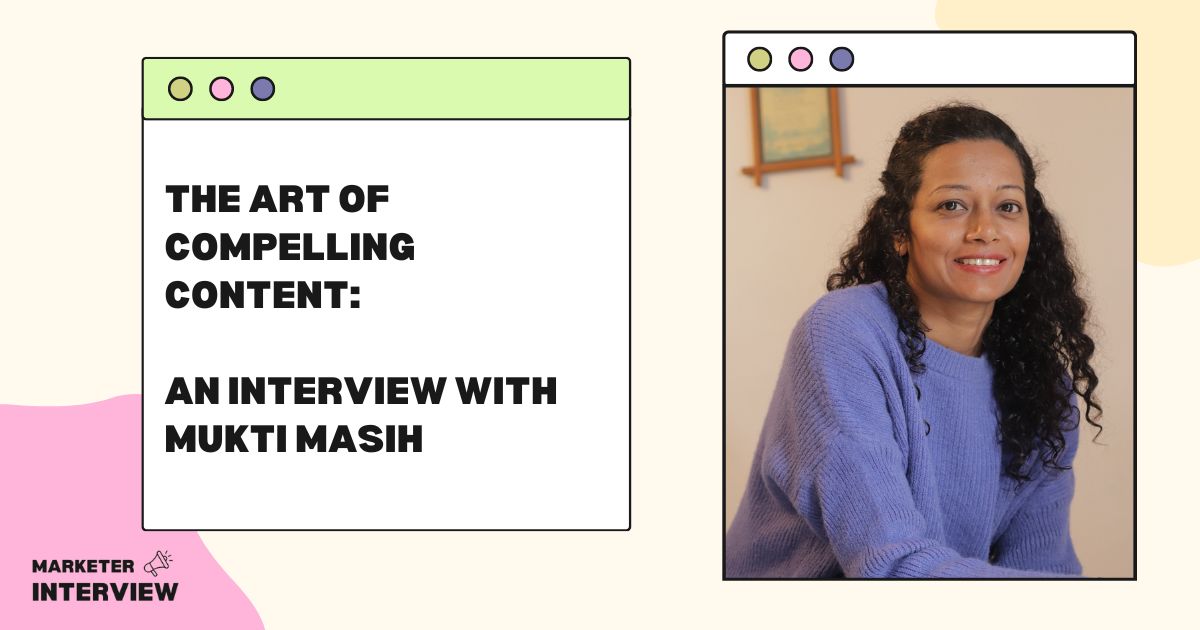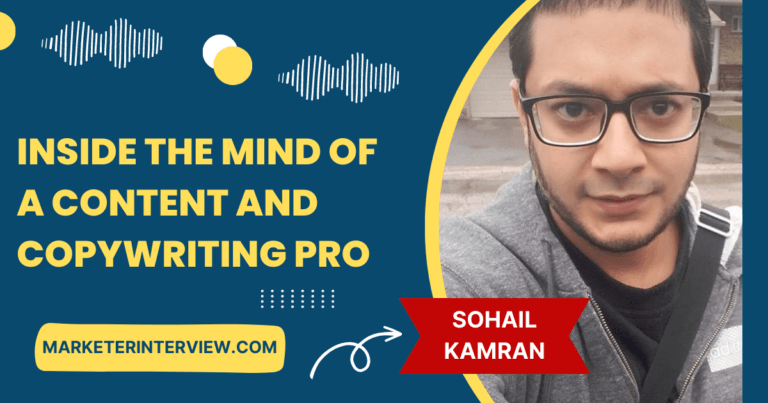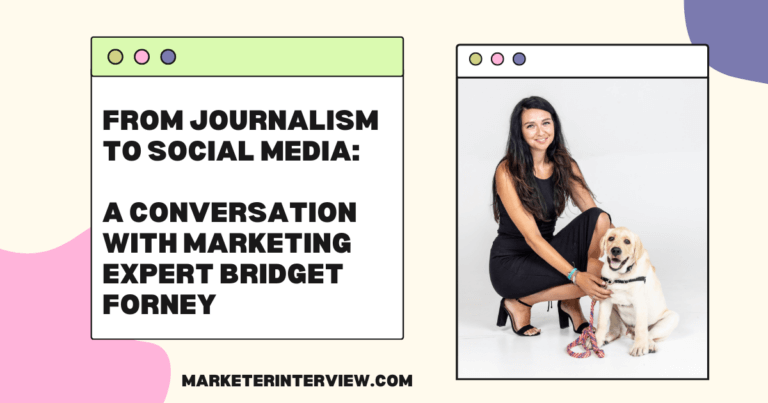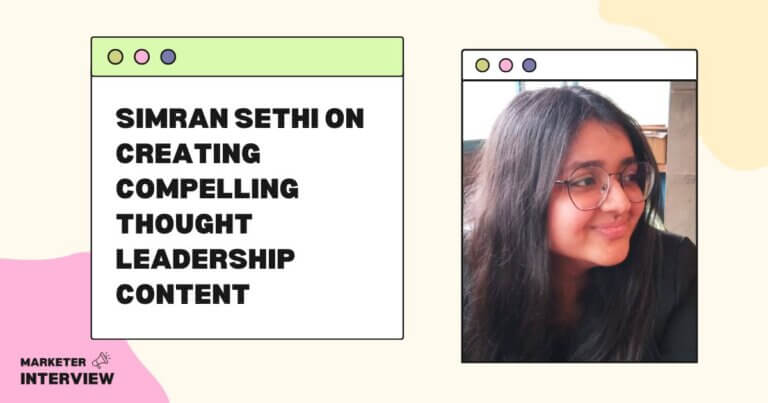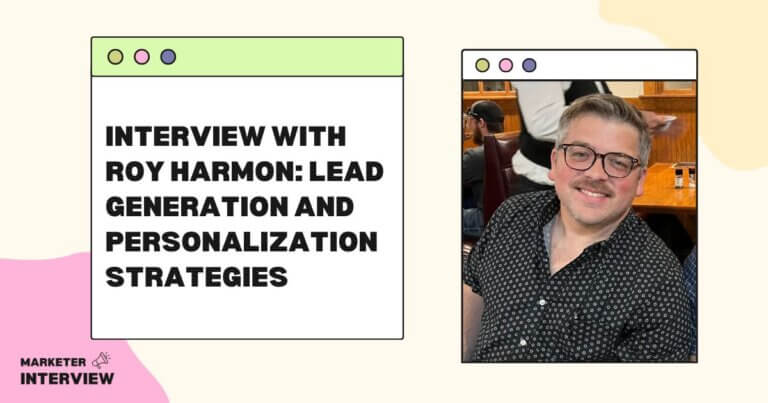The Art of Compelling Content: An Interview with Mukti Masih
Welcome to Marketer Interview, where we delve into the minds of remarkable marketers and uncover the secrets behind their success!
In today’s interview, we had the pleasure of speaking with Mukti Masih, the Head of Content at AVM Pictures and an expert in content and copywriting.
With over 16 years of experience, Mukti has established herself as a force to be reckoned with in the industry. Her dedication to integrity and unique content practices has earned her lasting client relationships and numerous accolades.
Join us as we explore her journey, insights, and expertise in the captivating world of content creation.
Contents
- 1 Can you share with us your journey of getting into the marketing field and discovering your passion for content and copywriting?
- 2 As the Head of Content at AVM Pictures, what are your primary responsibilities, and how do you ensure your team produces high-quality content?
- 3 With your podcast “Method to Madness with Mukti Masih” becoming a success within three months, what strategies did you employ to achieve such rapid growth and recognition?
- 4 How do you maintain integrity in your content creation process and its impact on client relationships?
- 5 Having written a vast amount of content, how do you balance quantity and quality?
- 6 Could you share an example where your compelling writing profoundly impacted the audience?
- 7 What role does travel play in enhancing your writing skills, and how do you incorporate your first-hand experiences into your content to captivate readers?
- 8 As a co-founder of AVM Pictures, how do you merge the worlds of video content production and copywriting to deliver compelling messages to audiences?
- 9 Do you rely on any specific tools or software for your content creation and copywriting tasks? How have these tools improved your efficiency or creativity?
- 10 What were the most significant challenges you faced in content writing throughout your career?
- 11 Lastly, are there any remarkable marketing professionals in your network that you recommend we contact for our following interview?
I discovered my passion for writing at eight, so I studied journalism and mass communication after graduation.
I began as a journalist and worked with India’s leading English daily, The Times of India (TOI, as a Features Writer.
During this time, I realized that I loved researching, writing, and presenting more than reporting. So I quit TOI after almost two years and began freelancing, using all my contacts in my phonebook, calling people if they needed help with their brochures, marketing material, website content, etc.
During this freelancing period, I also invented ways to market my skills. For instance, before cold-calling a company, I would find errors in their already published ad on a billboard or a newspaper, so my pitch would be stronger.
My success rate for this trick was 8/10, and I was pretty happy with it. Eventually, when Linkedin was introduced, I used similar marketing tactics and contacted companies virtually.
Steadily I developed a business development system of my own and experimented enough to build my process of marketing my writing and skills.
During this time, my brother Abhishek was founding his video production company and invited me to be a Co-Founder and Head of Content. So he already had a great system of business development in place, something that he swears by even to this day.
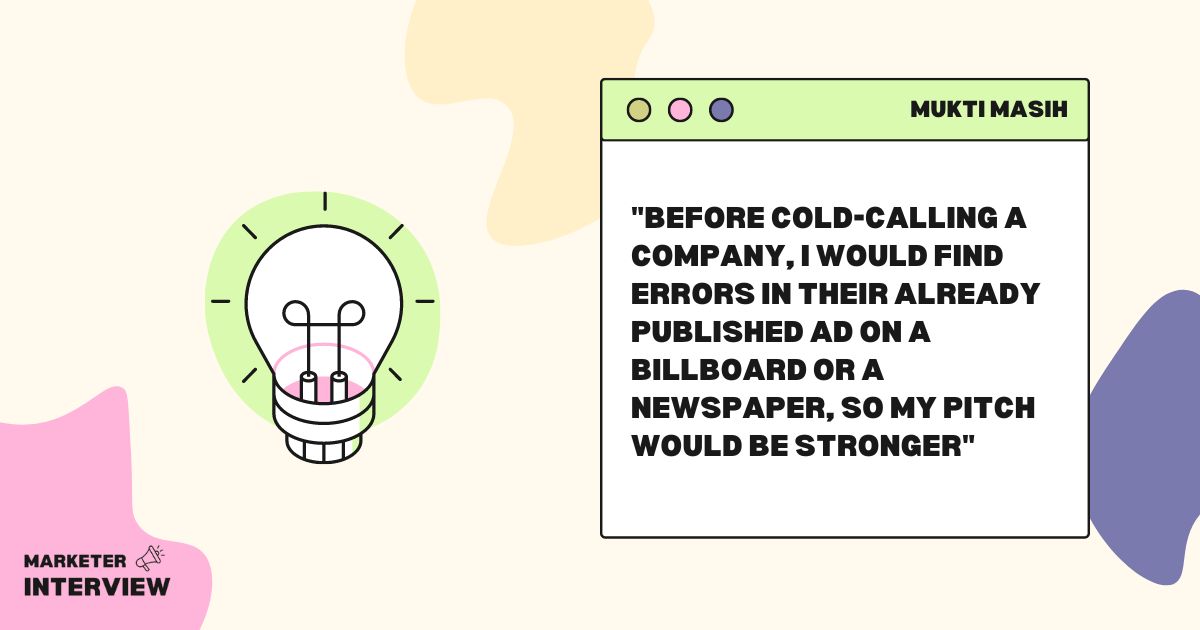
As the Head of Content at AVM Pictures, what are your primary responsibilities, and how do you ensure your team produces high-quality content?
To hone talents within a company, setting good examples is vital.
I take my sweet time training writers about the basics of writing and editing. My primary responsibilities include supervising the marketing content that our company sends out to clients, monitoring website content regularly, training new writers, and upgrading our team with the changing times.
For instance, we all learned to use ChatGPT and realized it’s best to create a primary blog or website content structure, but we cannot rely on it for quality.
So for marketing emails, we use ChatGPT, but for all the content we produce, we use it only as an outline.
Secondly, at AVM Pictures, we believe in multiple drafts. We believe in ruthless editing. Our first draft is often very different from our last because we spend a considerable time on quality checks.
With your podcast “Method to Madness with Mukti Masih” becoming a success within three months, what strategies did you employ to achieve such rapid growth and recognition?
Good marketing begins way before a product is even conceived.
While writing topics and scripts for my podcast, I created an Excel sheet of to-dos to promote the podcast. I had identified my target audience – Indians and Asians who are just discovering the world of podcasts and won’t spend more than 20 minutes on a podcast.
I created a buzz first – from the unveiling of the name of my podcast to the first podcast poster (We did a proper professional photo shoot for the cover of the podcast based on the concept I had in mind), the buzz around the trailer, then the first episode, etc.
I then began personal outreach – interacting with my followers on Linked-in about what subjects they would want me to cover, whether they would be kind enough to follow my podcast when it launches, etc.
Two principles I followed diligently were keeping it personal story-based and not holding back while creating value.
To date, I have not hired anyone to promote my podcast or shelled out any penny in its promotion. I just used some clever and doable tactics (considering I have other things to do) to promote it.
It worked because I was consistent, learned from my audio editing errors, and focused on creating value even in a 5-minute podcast.
I also worked quite strategically on creating podcast notes and podcast descriptions, putting them in the correct category (Self-Help/Life Lessons). I kept the podcast’s scope not too wide and not too narrow (content, travel, life lessons).
I still write my episode descriptions cleverly, giving out relevant links and information apart from keeping polls and open feedback channels for audience interaction.
How do you maintain integrity in your content creation process and its impact on client relationships?
Since I began as a journalist, I have deeply respected original content.
Even if your idea may not be unique every single time, the content must be 100% original. It has to be your voice, your perspective, and your take. So I have stayed quite consciously away from copying or plagiarism.
Yes, I do a tonne of reading before sitting down to write, and even though it is pretty tempting just to take away a punchline as it is, I overcome that temptation by giving my spin to a good line someone has already worked hard on.
A software company’s website has this line for displaying client logos. For example, it said: We are the sidekicks of superheroes. So while writing content for my client, I spun it to We are the Robins of the world’s Batmen.
Another principle that I follow diligently is to personalize all my content.
There has to be a story and a flow, even though it is the landing page or a company’s home page where I need to display all the critical features in one go. So I tell stories by content, giving us 95% repeat clients.
Today, as we sit back and marvel at the capabilities of Generative AI, storytelling is probably the only way to survive as writers.
Having written a vast amount of content, how do you balance quantity and quality?
I am relentlessly focused on quality.
Even on our website, you won’t find a tonne of blogs. We have written blogs based on the need of that particular hour, using SEO-focused content whenever required.
We don’t overdo SEO, and I think our search engines are now evolved enough to rank good quality content that brings value to the targets over content stuffed with keywords.
I follow some of these rules:
- Main keyword in the headline
- Self-explanatory headlines and sub-heads
- Image optimization
- Maintain quality of content
- Use keywords in 1-2% density
- Use internal linking
There are quite a few instances, but I will share the two I loved the most and took away the most from.
In 2017, I was writing for a SaaS company. They had hired me as a part-time Content Consultant and Writer.
To bring something new to the table, I changed their blog structure and landing page. I began including humane research from sources such as Harvard Business Review, Gartner Research, etc., and quoted compelling stories in each blog.
I focused intensely on user experience and interface and how these two factors convince potential buyers. When I was on the 5th blog, a rep of a massive company from the United States landed on one of the blogs, and he was so impressed by the content that he immediately sent an inquiry.
The sales team converted that lead within a week, and the next thing we knew, we were sitting on a social network development project worth six figures.
The other incident was in 2018:
Our company AVM Pictures was hired by a local five-star hotel for a video on Inclusion and Diversity.
They gave us a limited budget to shoot the video. Unfortunately, a constrained budget meant we couldn’t hire models, so we decided to feature their actual staff members.
I wrote a compelling copy highlighting the personality of some hand-picked employees while giving away the message that the hotel was creating a sense of pride for its staff.
While auditioning staff members, we had to scratch the idea of members speaking compelling lines on the video since only some were comfortable speaking English.
So we just asked them to smile at the camera while shooting action shots of them working at the hotel. Based on that video, this hotel was chosen among the Top 100 Best Places to Work Within India, at 60th position.
We translated the video into Hindi, and the hotel circulated it to their staff in my city and other chains across the country. They still use the same video to motivate their employees during orientation, claiming it helps instill their values.
What role does travel play in enhancing your writing skills, and how do you incorporate your first-hand experiences into your content to captivate readers?
Travel is crucial to my writing as much as I read books and blogs and observe other writers. Traveling challenges the writer in me.
I use my travel stories to bring out takeaways for branding stories. In addition, I create real-life scenarios in company blogs and articles to bring home points and vital messaging.
I also use travel stories as life lessons or create short-form Linkedin content for my clients.
As a co-founder of AVM Pictures, how do you merge the worlds of video content production and copywriting to deliver compelling messages to audiences?
My video content assignments make me unlearn what I have learned as a blog writer in the last 16 years.
You must use spoken yet clever language in video content; each word or phrase must match the visuals.
I follow a column-based approach to writing scripts – Voice Over, Text on Screen, and Visuals. For the two worlds to merge, the visualization has to be accurate.
For instance, if you are talking about birds chirping in your voice-over, the visual should automatically show the foliage of trees (if not birds), so you let the viewer see a little and imagine a little.
In copywriting, a compelling story with SEO best practices is enough to make your content stand out. In the video, however, every element needs to fall in place.
Recently, I wrote a video copy for a 60-second advert for an animation/graphic design academy. But the VO artist we hired failed to emphasize and emote the right words.
The entire ad looked uninfluential. So our CEO did the entire VO again to make it work.
Do you rely on any specific tools or software for your content creation and copywriting tasks? How have these tools improved your efficiency or creativity?
I used Quillbot for the final Grammar check. I use ChatGPT to create a basic outline for the blogs, articles, etc.
SmallSEOtools for checking plagiarism. Canva for designing social media posts
Google trends for topic research.
In addition, a large part of my work happens on Google Docs and Google Sheets, while I use LogicPro for sound recording and editing.
What were the most significant challenges you faced in content writing throughout your career?
So every four to five years, I ask myself: Am I still relevant?
This is a common challenge for most writers. I go on extensive reading sprees, researching content in the industries I am writing for, making profound observations about formats, writing styles, language, etc.
My biggest challenge post-pandemic was to keep a steady flow of writing assignments. I followed my old marketing method, experimented with creating lucrative content packages for my clients, took 2-3 lead calls per week, monitored my conversion rate, and learned from my mistakes.
After four months of this process, I was finally in a position of steady workflow and a good balance of marketing and content creation.
Currently, my biggest challenge is competing with the speed of Generative AI tools. As a result, I am making my blogs and articles more story and learning-based.
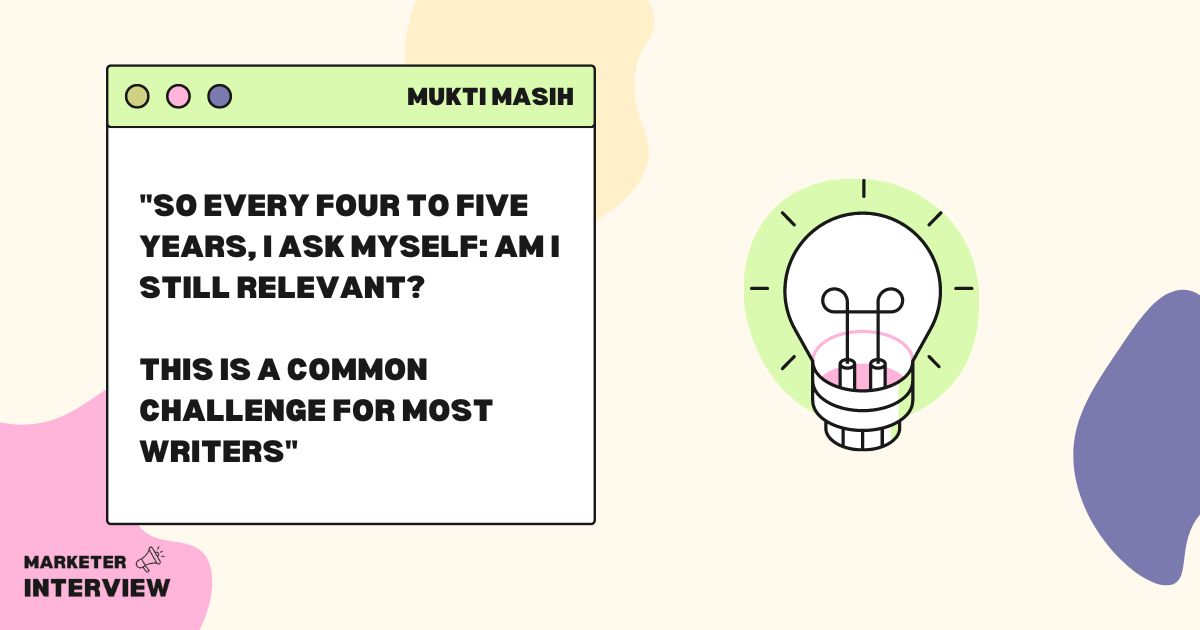
Lastly, are there any remarkable marketing professionals in your network that you recommend we contact for our following interview?
I know I am biased, but my brother and Co-Founder Abhishek Masih have some fantastic marketing hacks and ideas.
In addition, please also reach out to Priyanka Desai, who has a content marketing agency, and David Bruhlman, who is a marketing consultant for scientists and patent owners.
